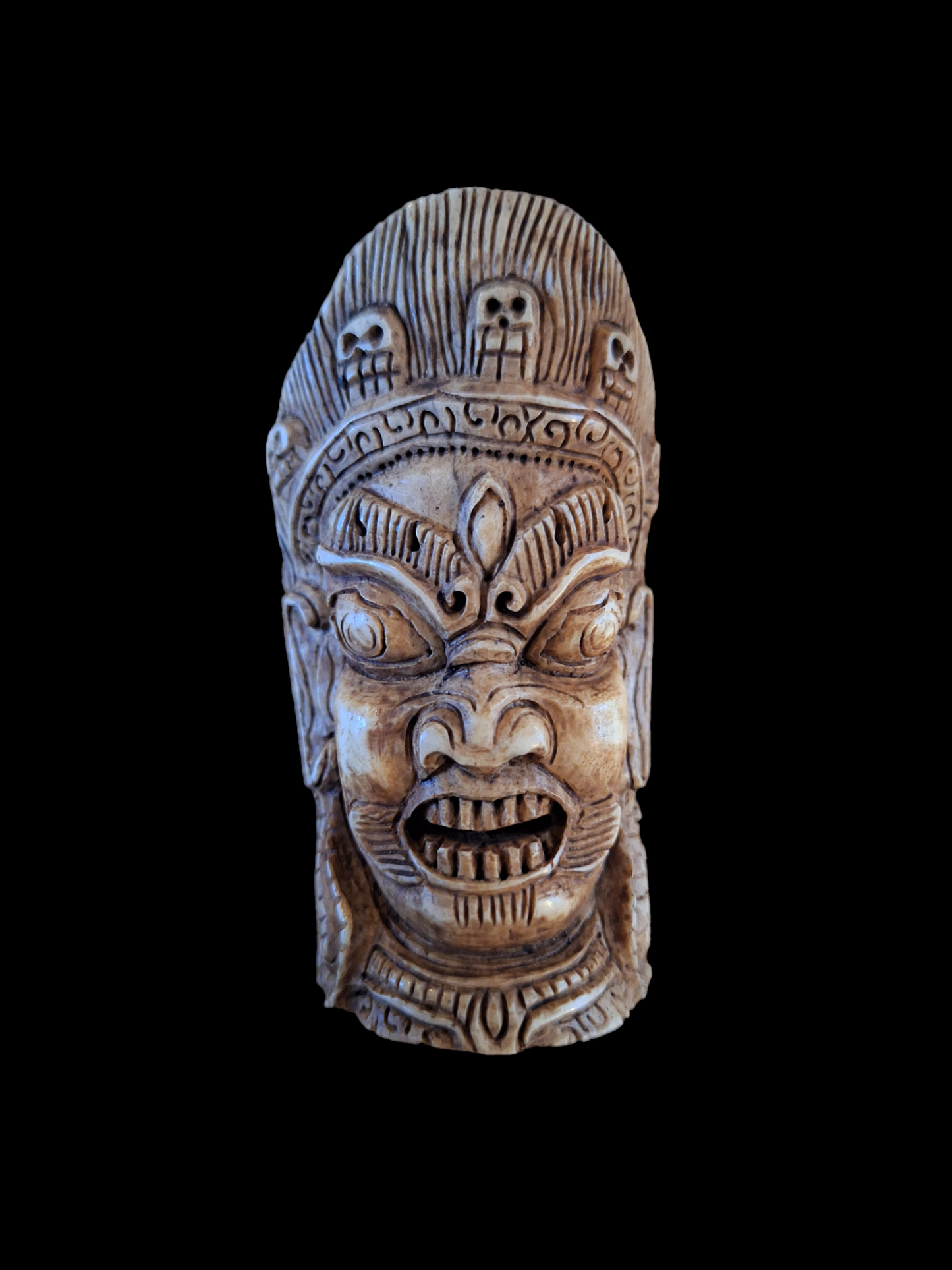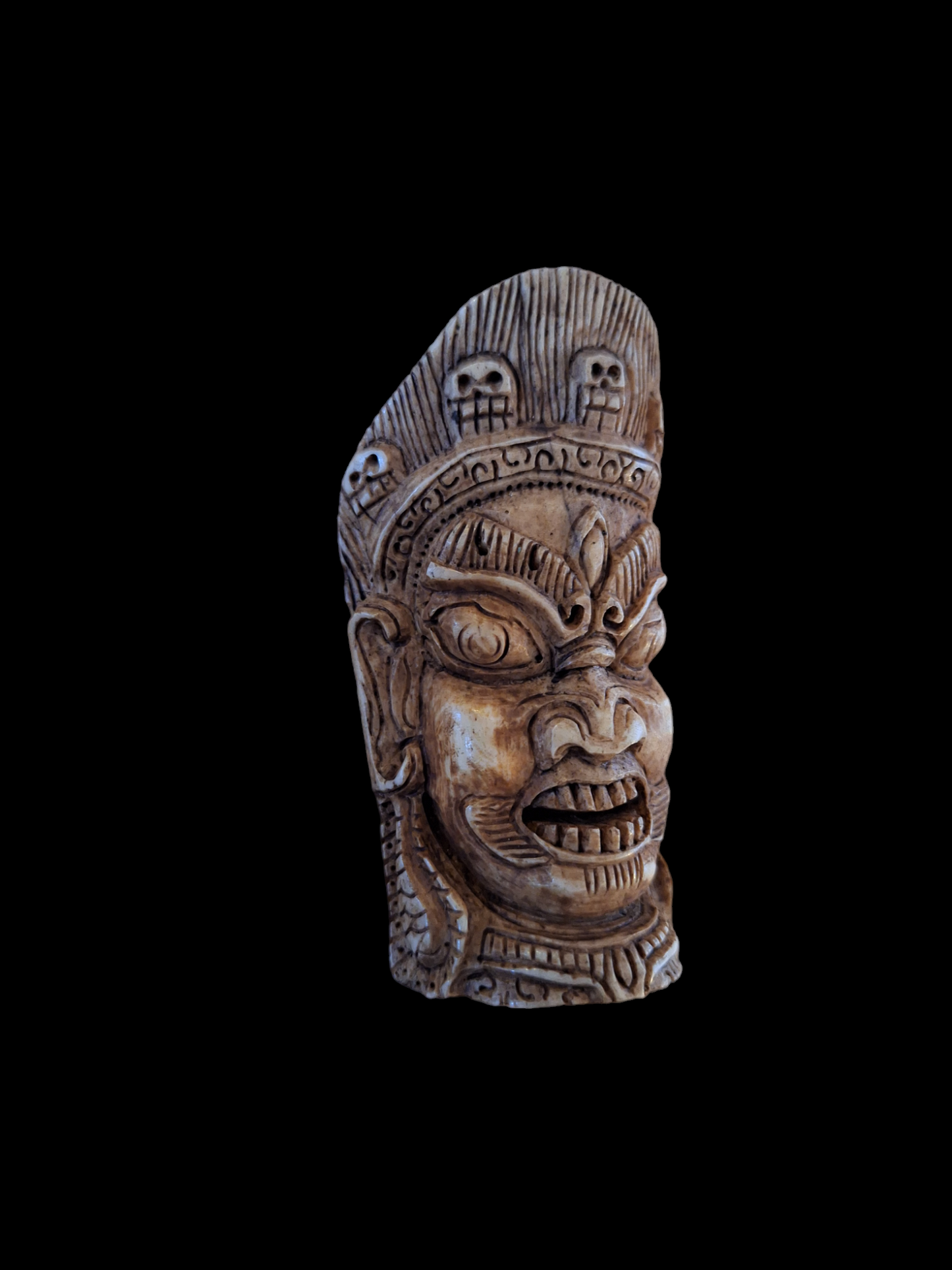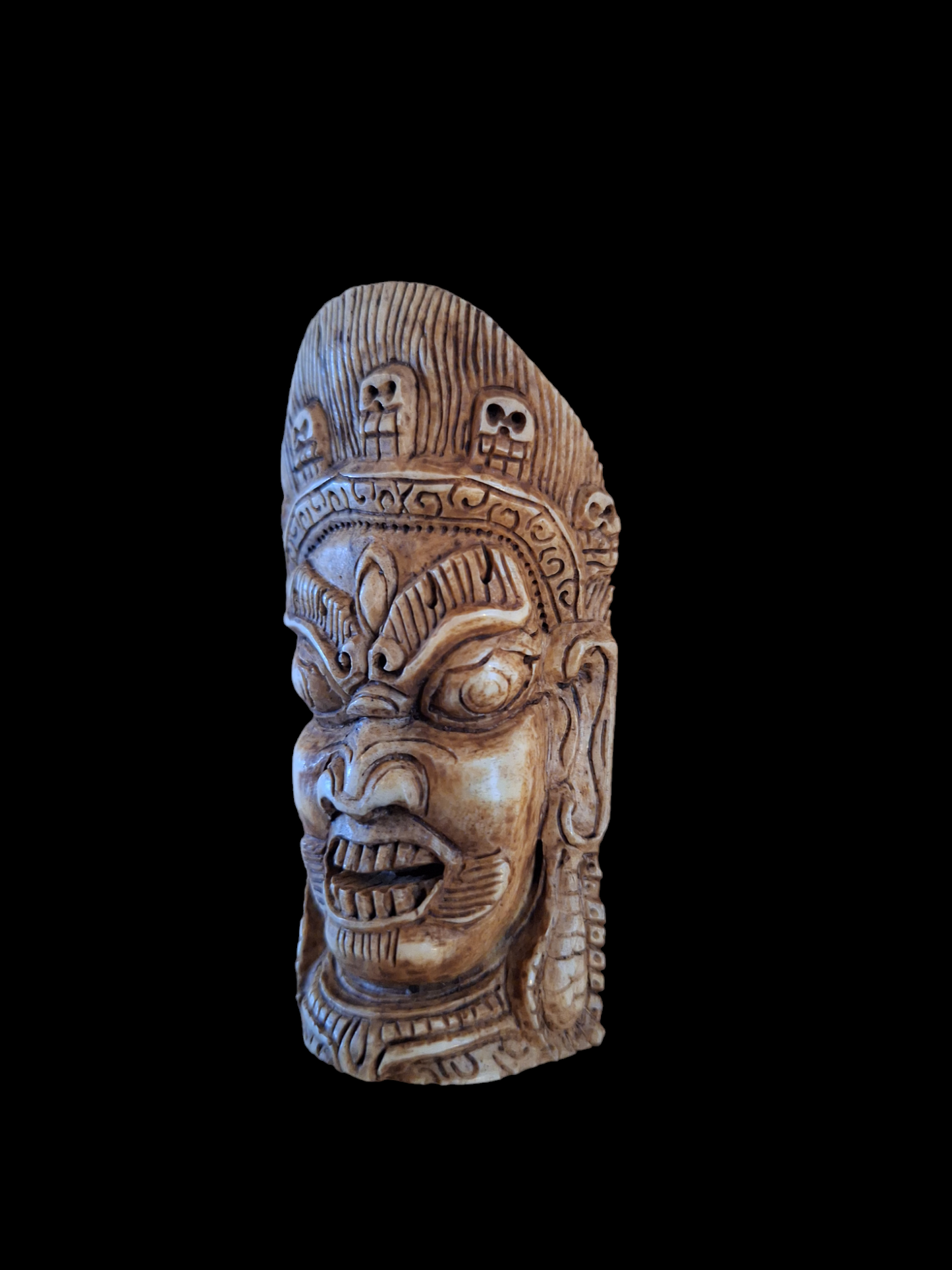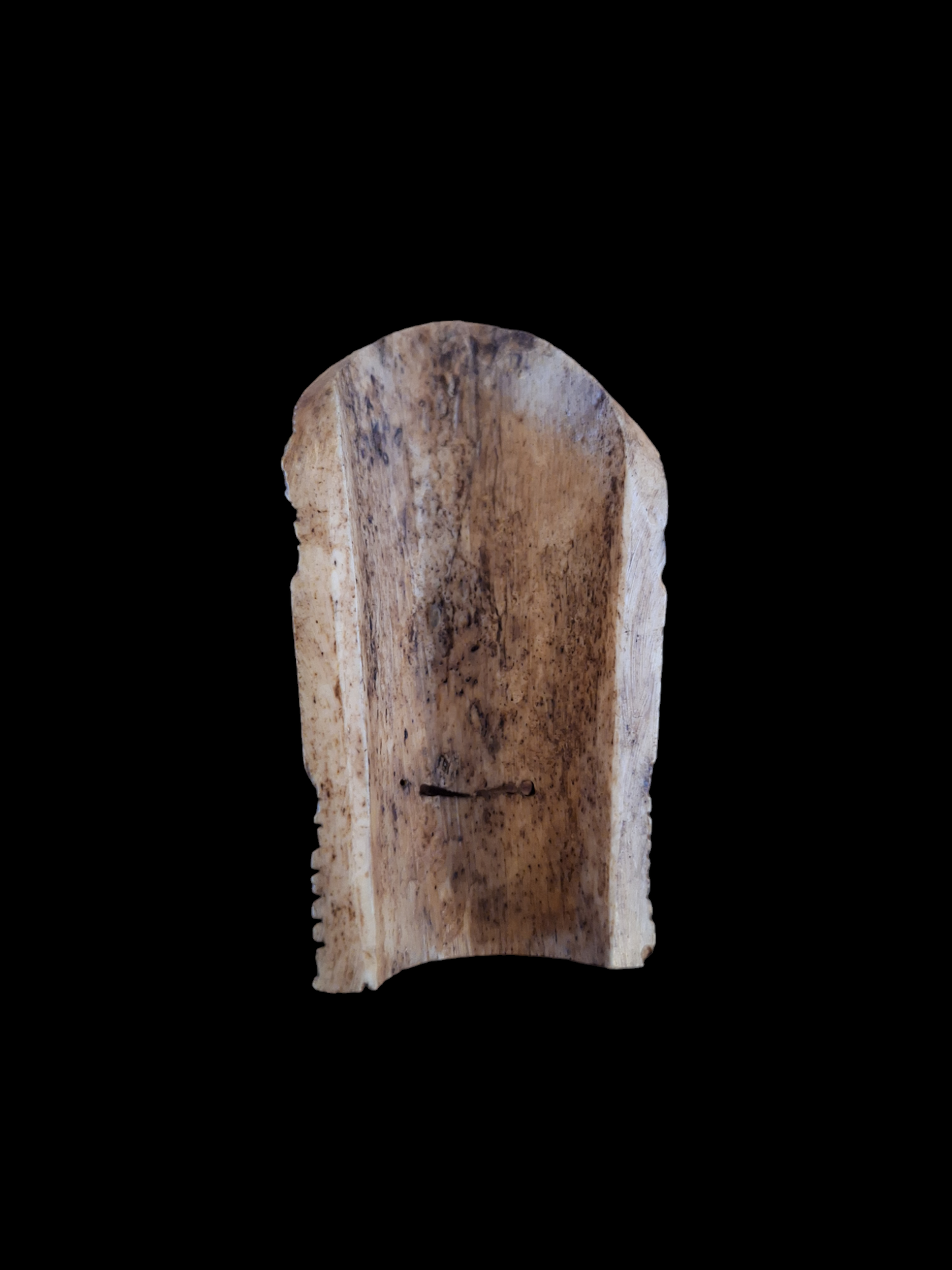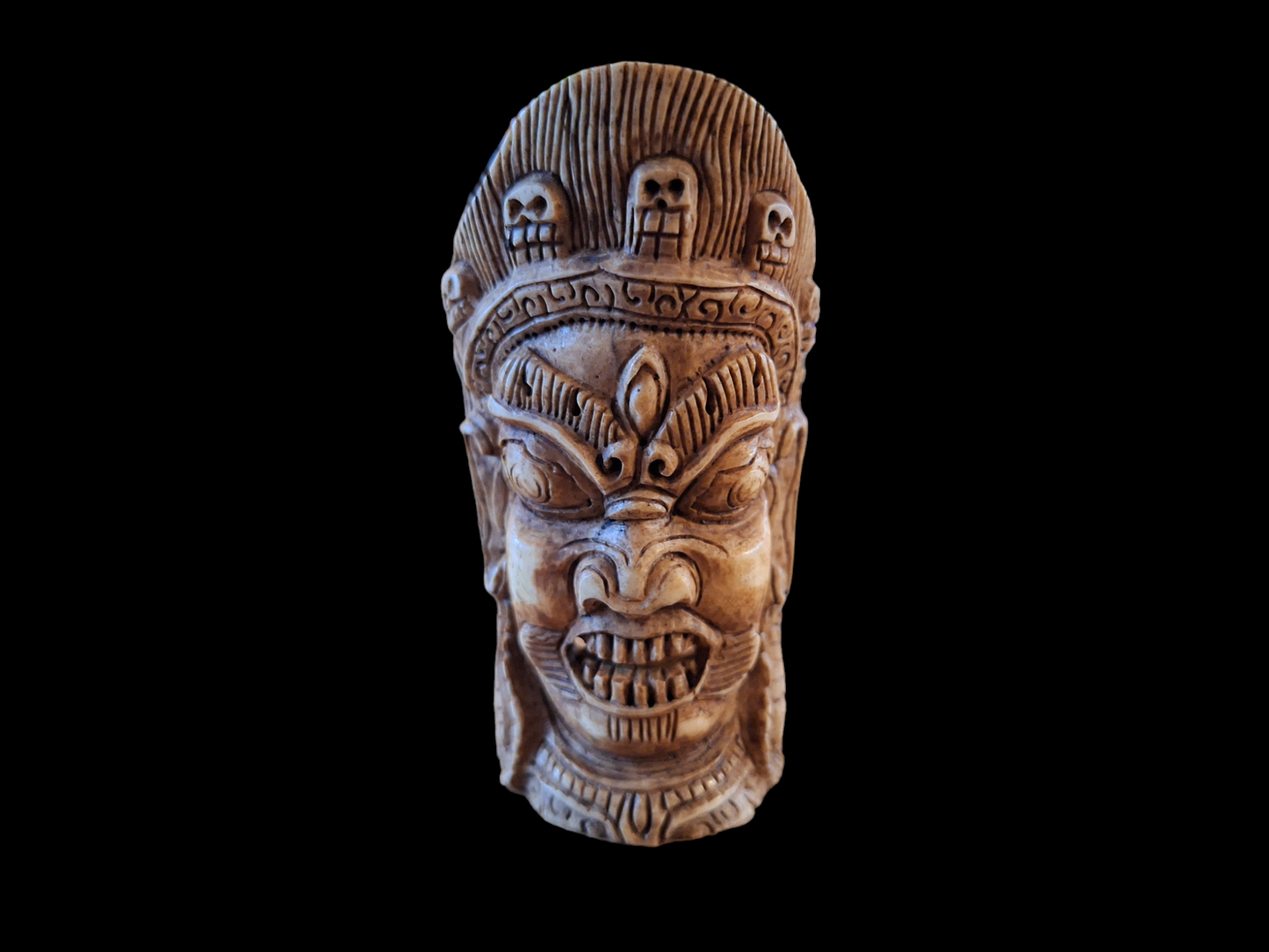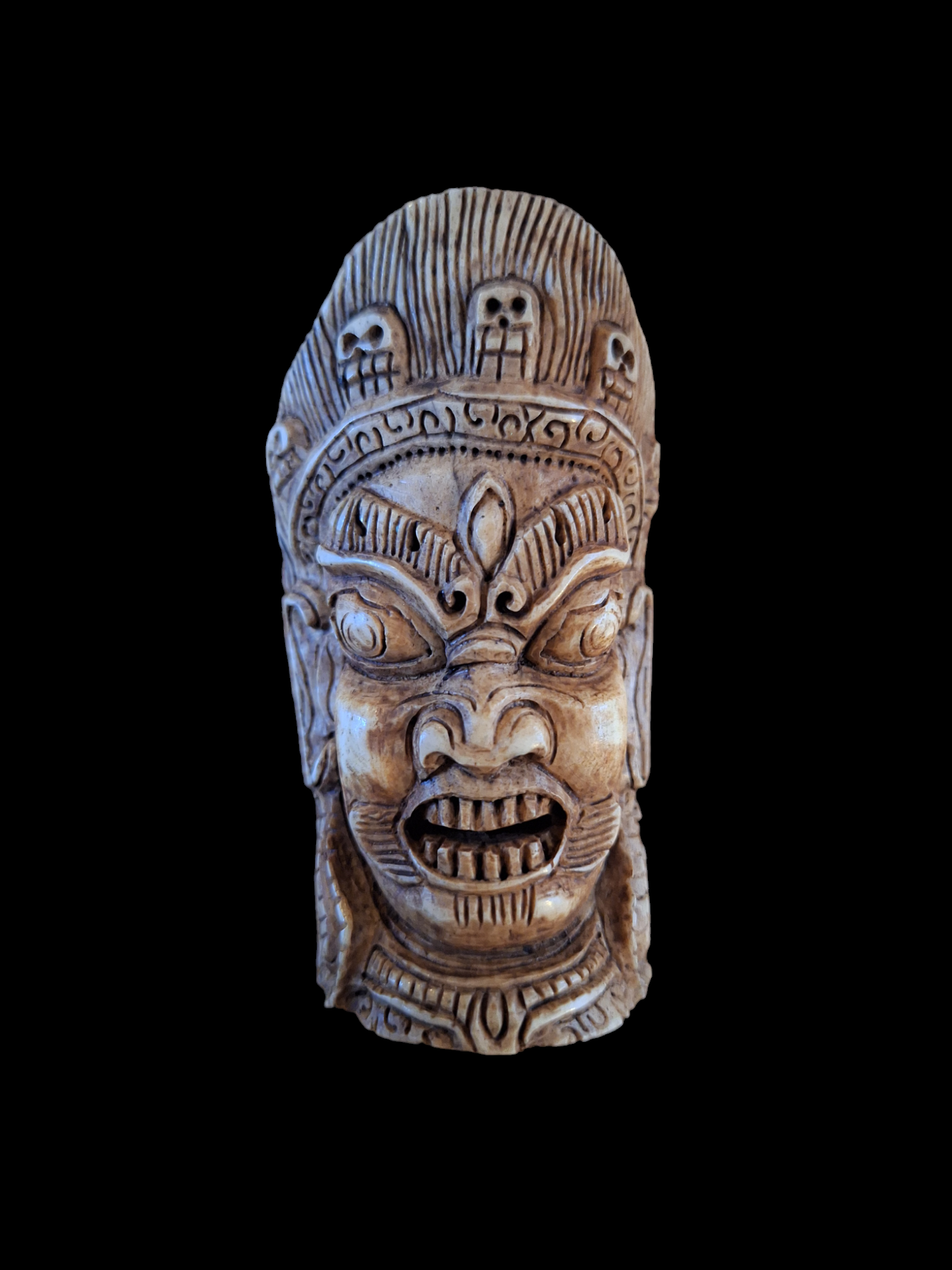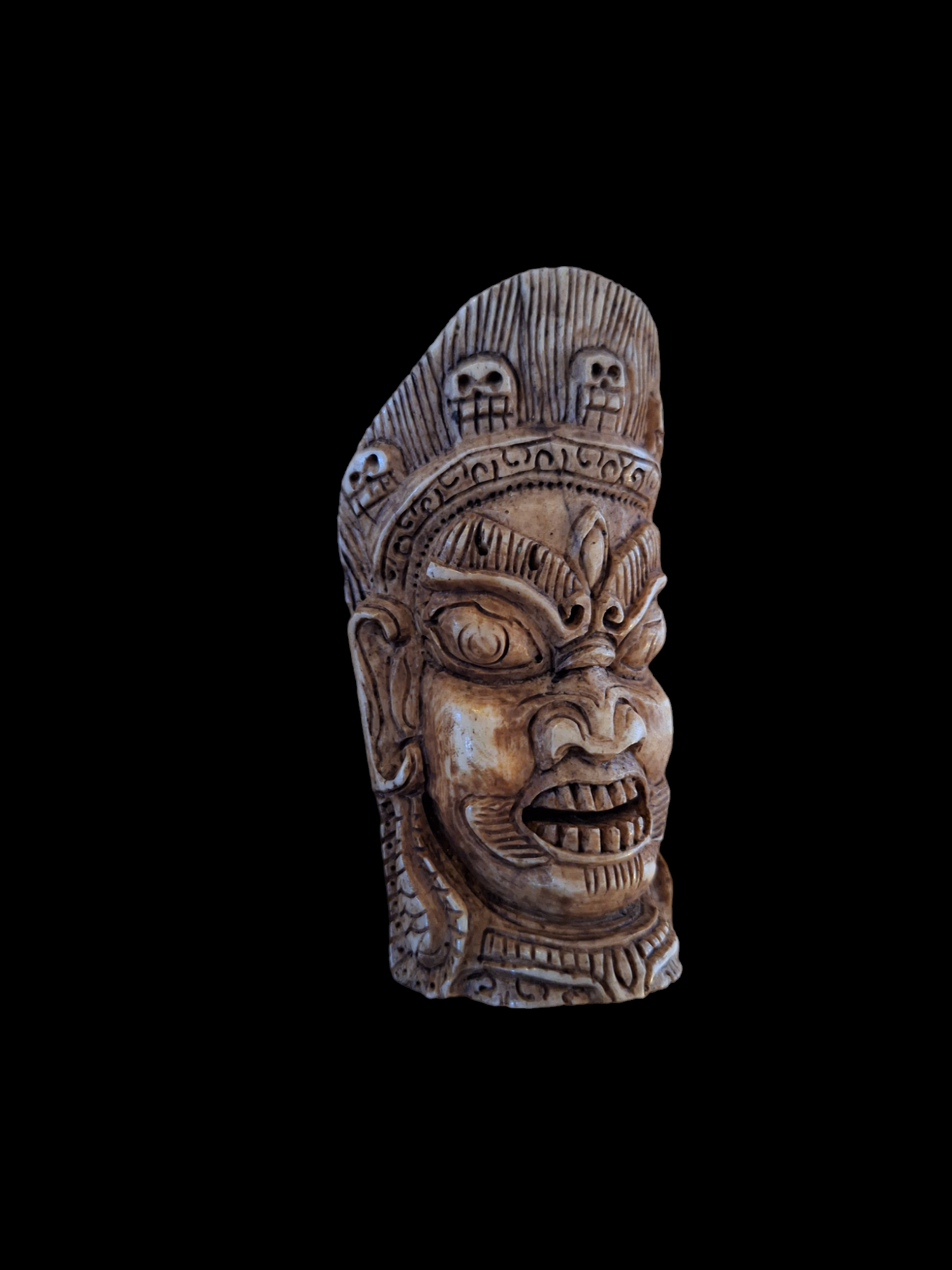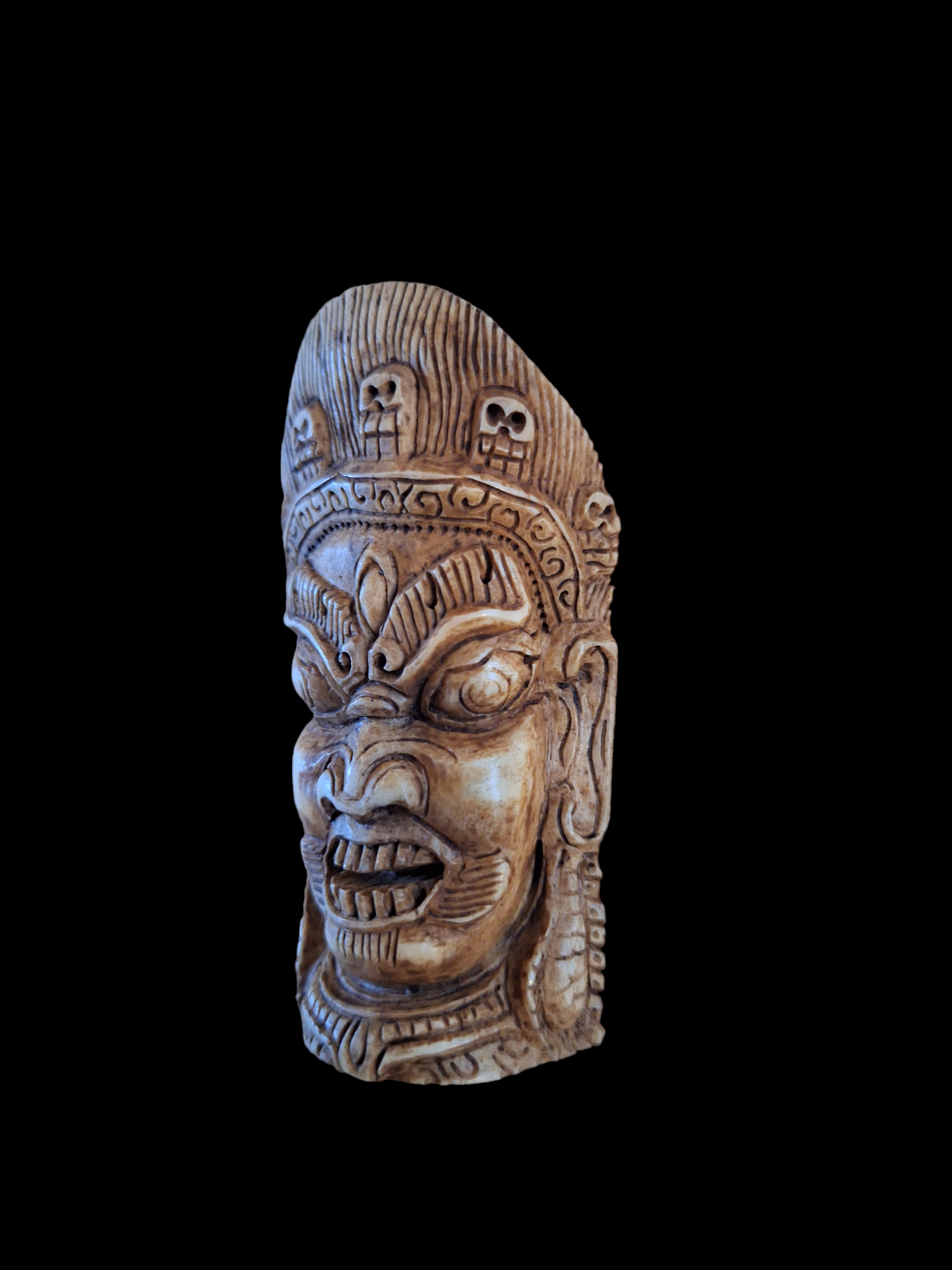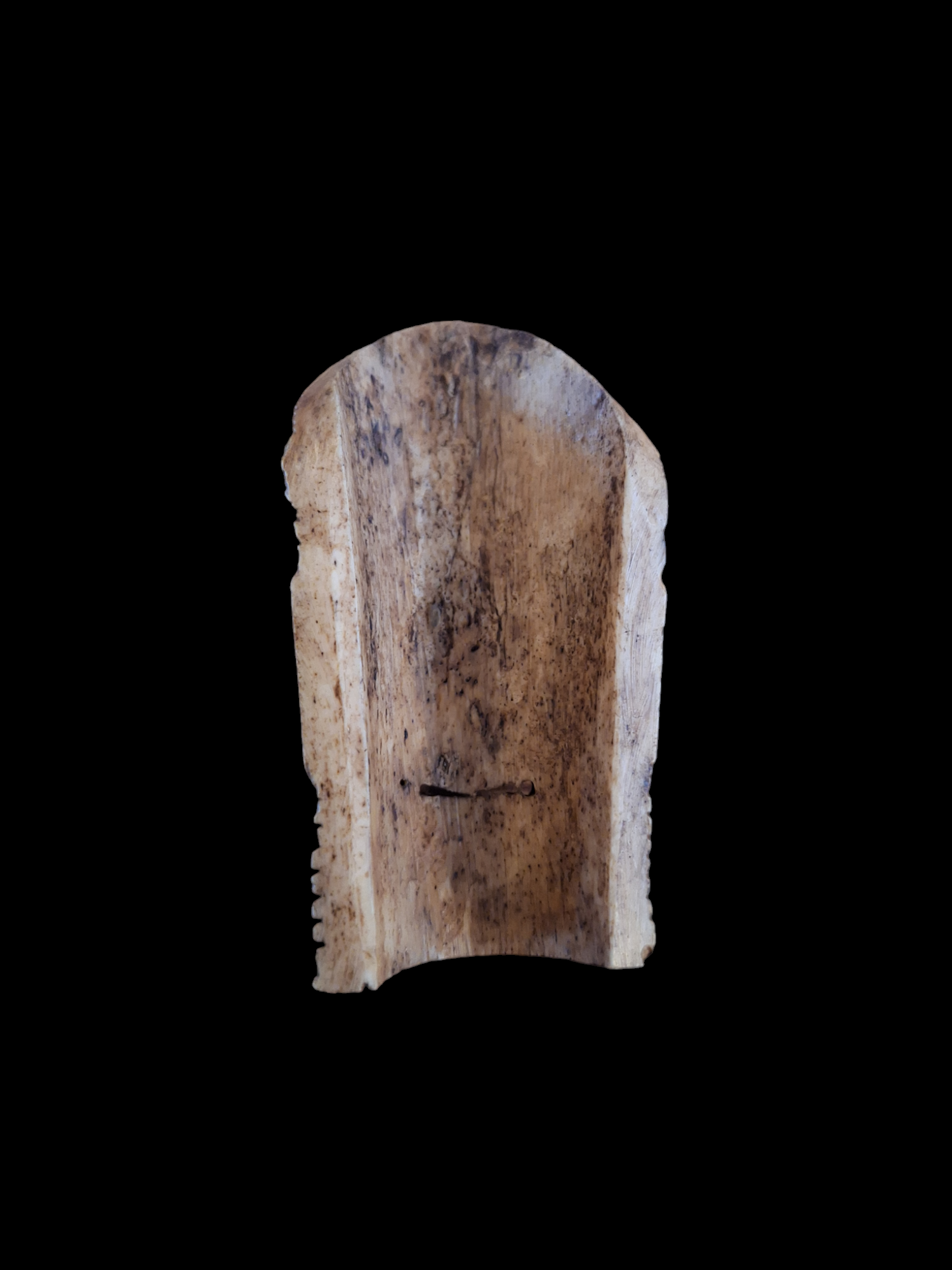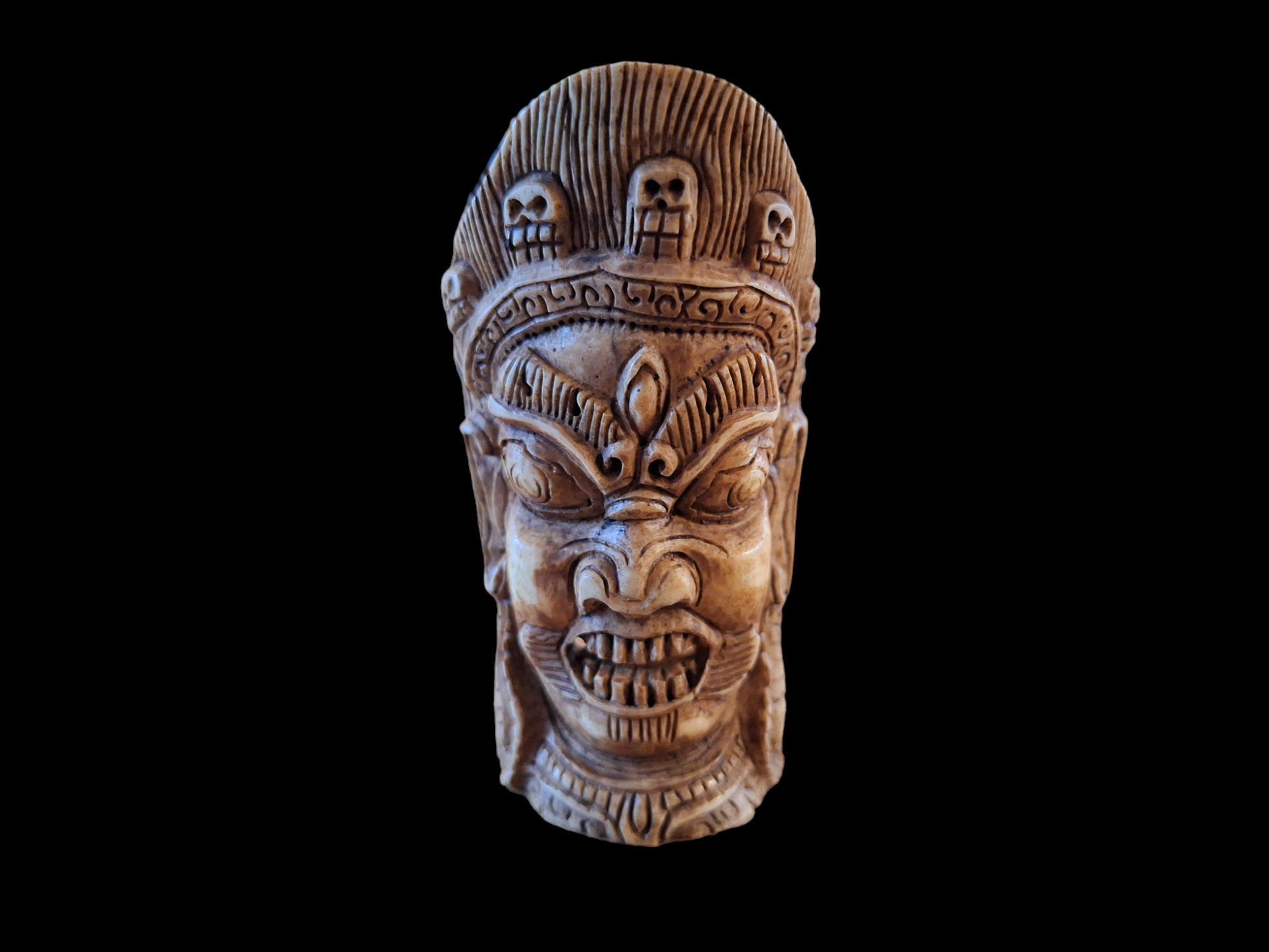Seawolf Shop
Vintage yak bone carving Mahakala
Vintage yak bone carving Mahakala
Couldn't load pickup availability
Share
Amazingly detailed Mahakala figurine carved from a piece of yak bone. Handcarved by an artisan craftsman in Kathmandu, with the utmost attention being paid to all the tiniest details. This is a real masterpiece.
Mahakala is a deity known in Hinduism and Buddhism. He is often depicted as a fierce, terrifying creature, embodying the wrathful dynamics of deities that also have a peaceful manifestation.
In Tibetan Buddhism, Mahakala is a wrathful emanation of different Buddha’s such as Amitabha and bodhisattva’s such as Avalokiteshvara, a boddhisattva representing the embodiment of universal compassion, who realized his peaceful methods were too mild to subdue the degenerate beings and thus manifested in a wrathful form to accomplish his compassionate intentions.
In Tibetan buddhism Mahakala is seen as a powerful protector of the dharma, which is one of the reasons why his depiction often can be found at the entrance of temples and monasteries.
In Hinduism, Mahakala is seen as a fierce manifestation of the supreme deity Shiva and the consort of the great goddess Mahakali. Here his name can also be found as ‘Mahakala Bhairava’, ‘Kala Bhairava’ or simply ‘Bhairav’.
The name ‘Mahakala’ consists of two Sanskrit words; ‘Maha’ meaning ‘great’ and ‘kala’ meaning ‘time’ or ‘death’. Mahakala can thus be seen as a personified form of Time itself; he is the ultimate destructive power, not bound or regulated by anything or anyone else and he eventually comes for everyone without distinction.
Iconography and symbolism of Mahakala may vary a bit between the different traditions of Buddhism and Hinduism, tho also depictions of him can be found interchangeable.
Symbolism that can often be found in depictions of Mahakala is for example; a third eye, representing clear, true vision and insights, not clouded by the distractions and illusions of the human mind and ego. And a crown with five skulls, representing the five 'poisonous delusions': anger, desire, ignorance, jealousy, and pride. And Mahakala is often depicted in black; the total absence of color, in which all colors just disappear, symbolizing the ultimate, absolute truth and his all-embracing, all-encompassing nature.
Also in traditional shamanism, such as the lineage of Spirit of Wolf, depictions of Mahakala (and other wrathful deities) can be found. Here they are also connected with Erlik Han, lord of the Underworld, and as such used in especially black shamanic work.
This figurine is approximately 8,5 centimeters high and weighs 45 grams. A unique item to put on your altar.
Only one available.
Please know; the art of real, artisan bonecarving by hand is a dying craft in Himalayan area's, because of, among other reasons, unfair competition from machine-made, a dime-a-dozen, mass production in other Asian regions. Therefore real pieces such as these ones are getting increasingly more rare and expensive.
